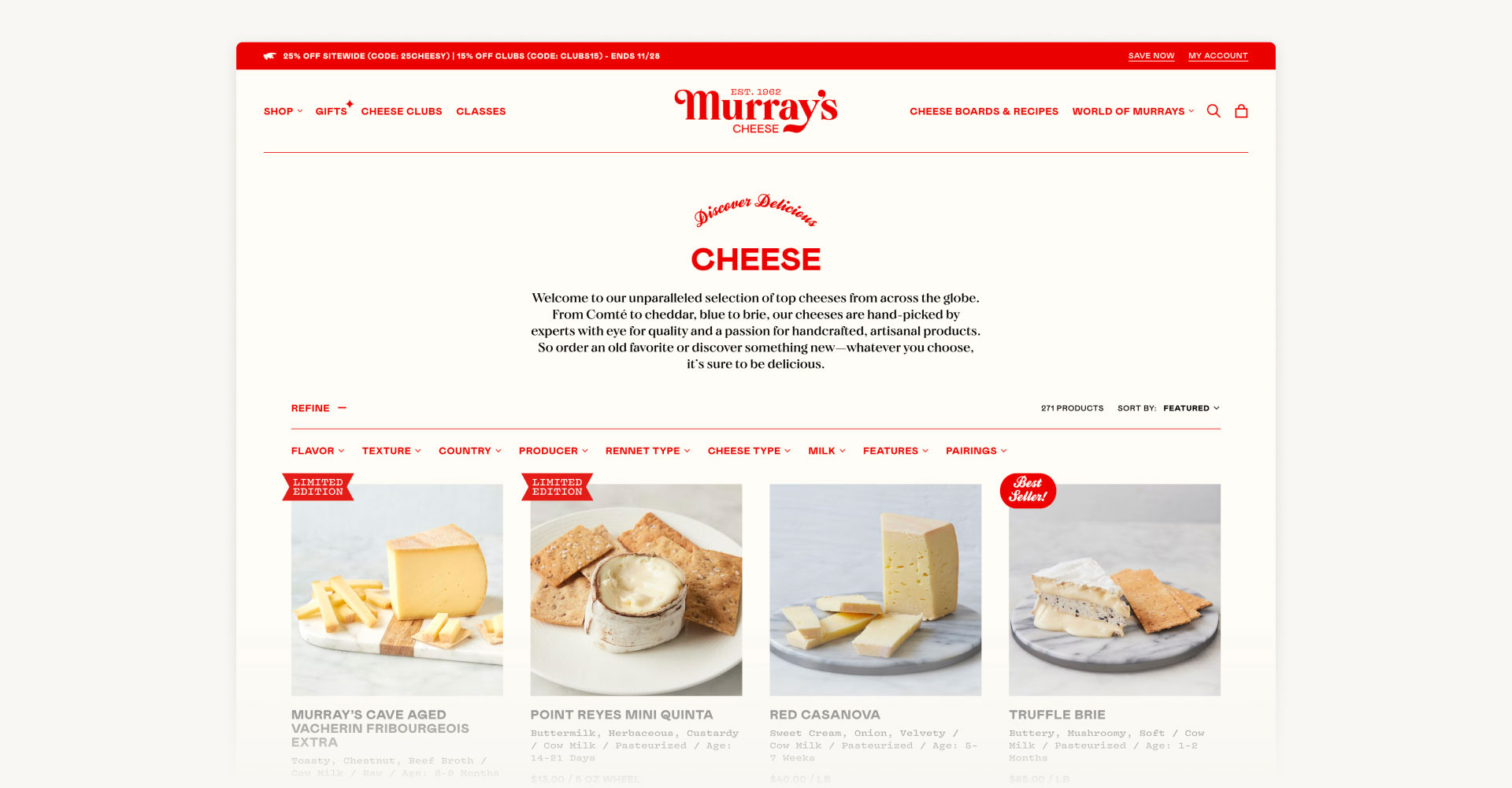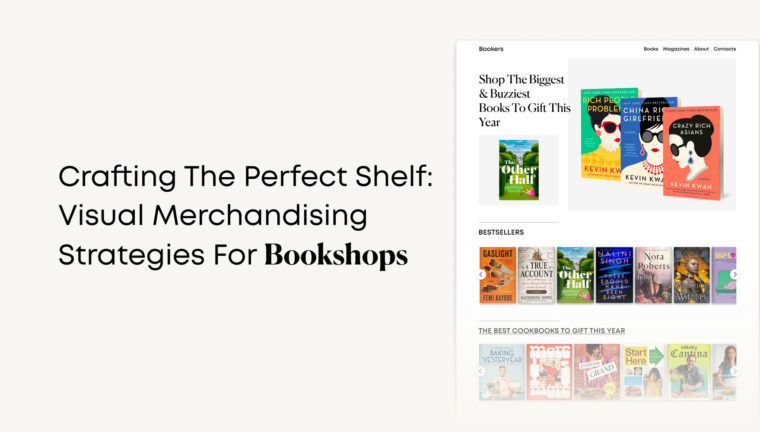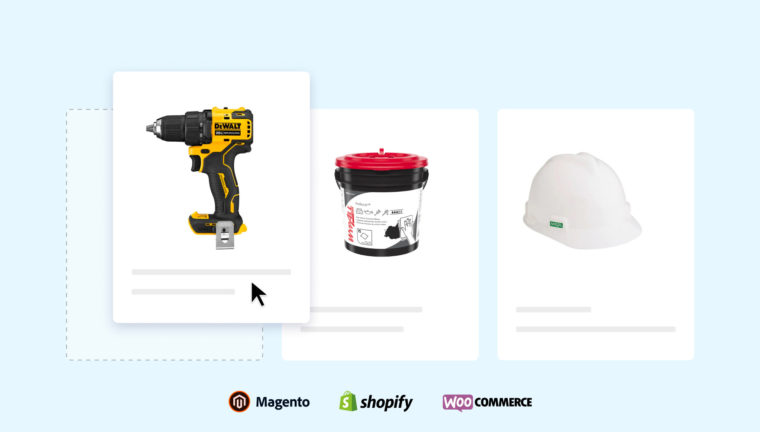No matter what happens, people will still buy food. But this doesn’t mean they will buy it from your store! The food market is highly competitive, so you must do your utmost to succeed and stand out.
You should start by going online, which is the first and obvious step as people increasingly order food and beverages from the comfort of their homes. If that’s done, and you’re already running your eCommerce business, it’s time to enhance it with relevant visual food merchandising techniques.
Our new blog piece thoroughly covers this topic and discusses how to approach it best.
The Power of Visual Appeal
Studies have shown that 90% of the information transmitted to the brain is visual, and we process such data 60,000 times faster than text or even audio. That’s why product presentation has a significant impact on consumers’ purchasing decisions. This brings us back to the role of visual merchandising in the food industry, especially in eCommerce.
Key Elements of Food Visual Merchandising
Visual merchandising allows brands to showcase their products in an aesthetically pleasing and enticing manner, increasing the likelihood of catching the consumer’s eye and piquing their interest.
To achieve maximum effect, you should take care of image content, packaging design, and storytelling.
High-quality product photography
- Creating an emotional connection. Appeal to consumers’ emotions to establish a deeper connection and build trust with your target audience. For instance, using images that highlight the freshness and deliciousness of the food can evoke a sense of craving and desire. Additionally, incorporating relatable and aspirational visuals, such as happy families enjoying a meal together or individuals leading a healthy lifestyle, would create an emotional resonance that motivates consumers to make a purchase.
- Importance of professional product images. The second point follows logically from the first. If you want to evoke the right emotions in the consumer and encourage them to buy, hire an expert in working with food-related photo content. Don’t skimp on their professional services.
- Showcasing product features. Zoom in on the unique aspects of your food items to communicate your core value to customers. Whether it’s the intricate toppings on a pizza or the layers of a decadent cake, capturing these details can urge customers to try the product.
- Utilizing attractive backgrounds and props. Do your best to capture customers’ attention with carefully selected backgrounds and visually pleasing displays. For example, add props such as serving utensils, fresh ingredients, or garnishes and thus enhance the overall presentation, encouraging customers to envision themselves enjoying the food.
Creative packaging design
The second food visual merchandising element is packaging design. However, you can only work on this aspect if the food products you sell are part of your brand. If that’s not the case, there is no choice but to deal with what you have and focus your efforts on showing off existing packaging with the quality photography we’ve just discussed.
But let’s imagine you can influence the packaging design. If so, pay attention to the following:
- Showcase your brand’s uniqueness through packaging. Look at your competitors and try not to get lost among them.
- Reflect the product’s essence, depending on what exactly you’re selling. Let’s agree that wine and milk have entirely different values for the customer!
- Use color psychology to evoke desired emotions. For example, warm and bright colors awaken appetite, which is the surest way in many cases for food products.
Storytelling through visuals
When discussing visual merchandising techniques in the food industry, we cannot fail to mention storytelling, namely:
- Visualizing the product journey to the table: Why not strengthen the connection with customers by allowing them to look backstage and see how this or that product ends up on their table? For example, if you work with baked goods, you can offer a series of attractive images or videos that depict the sourcing, harvesting, preparation, and baking processes.
- Highlighting product origins: Customers are increasingly interested in knowing where their food comes from. Therefore, it is essential to communicate the origin of the products visually. Images of farms or regions where food is produced are a good option, as are interactive maps or infographics giving a clear picture of its source.
- Emphasizing sustainability practices: With the growing importance of sustainability, showcasing eco-friendly practices becomes crucial for online food stores, too. So if you use environmentally friendly production methods, such as organic farming, fair trade partnerships, or “green” packaging, be sure to convey this message to customers through video and image content.
There is another critical point related to visual merchandising in the food industry, namely, efficient product display. But we’d like to discuss it separately since the topic is too important to be covered in short.
Innovative Product Display Techniques
In an online store, the most important element is obviously the catalog and how it represents your range. That’s why an effective and spectacular product display is a part of any successful food retail merchandising strategy.
Dynamic product arrangement
Start with the proper structuring of your food items:
- Eye-catching product placement: One effective technique is to place high-demand or featured products in prominent positions on your catalog pages and use visually appealing banners or sliders to highlight specific items.
- Engaging product groupings: Group food items based on themes, cuisines, or occasions, thus enhancing the visual appeal of your e-commerce store. For example, create a “Summer Barbecue” section featuring grilling essentials or a “Healthy Snack Alternatives” category.
- Seasonal and thematic displays: Change your product displays with the seasons or upcoming holidays. This way, you create a sense of urgency and encourage customers to purchase based on the current trends or festivities. For instance, during the holiday season, you can add a dedicated section for Christmas-themed products such as sweet sets.
Interactive and engaging visuals
Take food visual merchandising to a whole new level with interactive approaches:
- Videos and GIFs to showcase product usage: A good example is to illustrate a recipe tutorial based on your ingredients or demonstrate the proper usage of kitchen gadgets.
- Customer-generated content for authenticity: Encourage customers to share their experiences with your food on social media platforms or your website. In the last case, you can create a special section where users will submit photos or reviews.
- Food-related quizzes or games: How about creating a “What’s Your Perfect Pizza Topping?” quiz? It would suggest toppings based on the customer’s preferences.
Cross-selling and upselling tactics
Another example of visual merchandising techniques in the food industry is the use of cross-selling and upselling tactics, such as:
- Suggestive product pairings and combinations: Recommend complementary products to customers based on their current selections. For example, if a customer adds a bottle of wine to their cart, offer pairing it with a selection of gourmet cheeses.
- Related products and complementary items: Promote food items that go well together on your product pages. For instance, if a customer views a pasta sauce, display suggestions for pasta shapes or breadsticks to complete the meal.
- Time-limited offers or discounts for increased sales: Create a sense of urgency with limited offers on selected products, thus encouraging customers to make a purchase sooner rather than later.
Optimized User Experience
A well-thought-out product display is closely linked to the intuitive navigation of your online store. After all, the smarter your catalog is structured, the easier it is for customers to work with it, which means a better shopping experience.
Let’s give a couple of additional tips in this regard:
- Streamlined website design and navigation. Keep in mind the importance of a user-friendly interface and clear range organization. Among other things, it involves easy access to product descriptions, reviews, and other crucial information that can encourage customers to explore further and even make an actual purchase.
- Responsive and mobile-friendly design. As statistics show a growing number of mobile shoppers, you must be ready to meet their needs. Simply put, your visual food merchandising strategy should include points on ensuring seamless browsing and purchasing experiences and optimizing image content for different screen sizes and resolutions.
- Customer feedback and reviews. Also, you can improve the user experience by sharing positive customer reviews and addressing any negative feedback as promptly as possible.
Automated Catalog Management
Improving the user experience through effective product display requires constant attention on your part, which results in a significant investment of time and effort. To simplify these tasks, you should use innovative digital solutions.
A good option is Sortler, a food visual merchandising tool. Its main role is to take care of routine catalog management, allowing you to focus on other strategically important business goals.
Sortler can do a lot of things, for example:
- Working with the catalog at any time and place. Sortler is essentially a cloud-based retail merchandising software that you get access to after signing up for a monthly or annual subscription. All you have to do is choose the desired pricing option from the three available ones.
- Timely data synchronization. You will work with a virtual analog of your catalog, which you can synchronize with the online store whenever you want.
- Several usage options:
- Smart rules that allow you to explain to Sortller how to manage your catalog
- Scores: assign scores to products to determine how high they will appear on the catalog page
- Drag & Drop feature, which would help you visualize the catalog management process and make it more intuitive
- Task automation. Sortler works with the catalog independently, without your participation; you only pre-set the necessary rules it would follow. The exception is the Drag & Drop feature, which requires your attention. On the bright side, this usage option gives you the opportunity to see what is happening with the catalog here and now
Sortler is an excellent solution for visual merchandising in the food industry. Use it to achieve the following:
- A greater variety of goods on the page to show your product range in the best possible light. Thus, you’ll avoid a situation where only the bakery or items of a single brand occupy the first catalog rows while you have much more to offer your customers.
- Smart inventory management to ensure that the catalog reflects the true product availability situation. Sortler will move goods down or up, taking into account the level of their balances in the warehouse.
- More cross-selling and up-selling opportunities. Automatically create matching product combinations to encourage customers to buy multiple items at once. For example, on the eve of the Christmas holidays, when everyone is buying presents, you can place candy sets and other delicious gift packages next to each other in the catalog.
- Working with low-selling goods. Sometimes, the sellability of an underperforming item can be improved by making the desired product more visible on the catalog page or by adding a discount to it. And the best part is that Sortler will handle all this on its own.
Sortler will significantly simplify your work with the product display. You just need to figure out which items, in what percentage, and under what conditions to move down or up on the catalog page, and the rest will be the task of the smart algorithm. Pretty simple, right?
We’ve described the most popular visual merchandising techniques in the food industry and hope you’ll find them useful. If you still have questions, feel free to ask; we’re happy to advise you and provide additional information.






